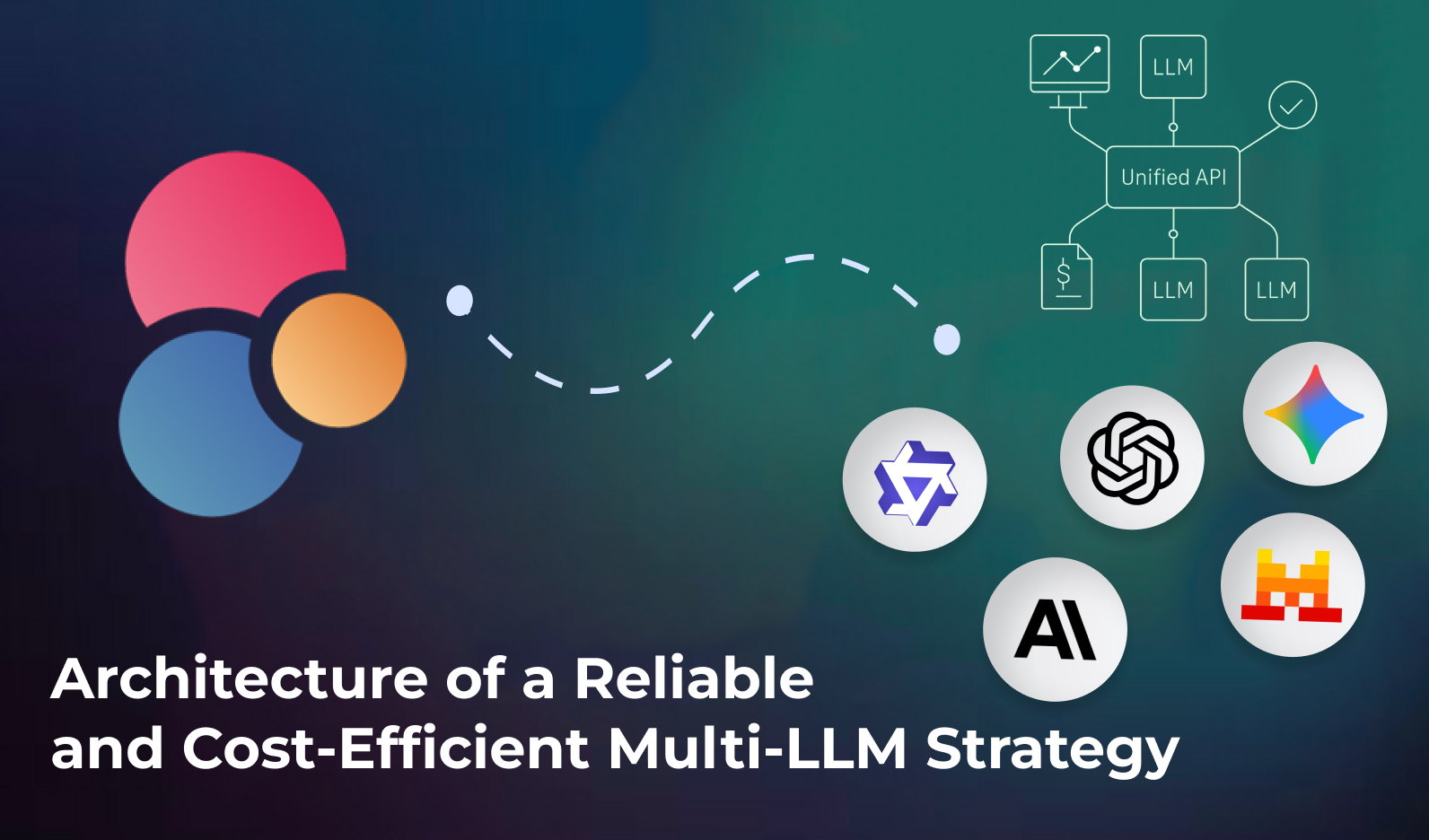
Start Your AI Journey Today
- Access 100+ AI APIs in a single platform.
- Compare and deploy AI models effortlessly.
- Pay-as-you-go with no upfront fees.
This article explains how to design a reliable and cost-efficient multi-LLM (Large Language Model) strategy for your product. It covers model selection, routing and fallback logic, cost monitoring, and unified API integration. You’ll also discover how Eden AI helps developers and product builders implement these strategies efficiently.

Depending on a single LLM provider creates risks such as vendor lock-in, pricing volatility, and inconsistent performance. Each model excels at different tasks, so combining several models increases flexibility and control. As detailed in Why Should You Use an LLM Gateway?, a gateway-based architecture provides unified access, resilience, and cost control.
A multi-LLM setup allows you to:
Track latency, output quality, and error rate.
Compare cost per token and hidden costs like retries or context size.
Some models are stronger in summarisation, reasoning, or translationalign choices with your product features.
Verify provider compliance with your users’ legal or regional data requirements.
Unified APIs, as shown in How Can I Get Access to Multiple AI Models in One Place?, make model benchmarking straightforward.
Instead of integrating each model separately, use a single unified API to simplify development and maintenance. See Access All LLM Models with One Unified OpenAI-Compatible API
Define rules for distributing traffic by performance, cost, or reliability. The article How Can You Load Balance Calls to AI and LLM APIs? explains practical load-balancing strategies.
Design automatic retries and secondary models to handle failures.
Ensure all responses follow a consistent structure for easy integration.
Centralise provider keys and track global usage across APIs.
Monitor spending per provider and per feature. Eden AI’s Cost Monitoring and Model Comparison tools provide real-time insights.
Measure latency, token usage, and error rates to adjust routing dynamically.
Define spending thresholds and alert triggers to prevent overruns.
Regularly review reports and fine-tune routing logic based on model performance and pricing evolution.
Distribute workloads across multiple LLMs to avoid single-point-of-failure scenarios.
Leverage geo-routing or region-based provider selection.
Cache repeated requests and group queries to reduce cost and response time.
Continuously test new models with small traffic samples to validate improvements.
Design modular components that allow easy provider replacement or expansion.
Eden AI centralises all major LLMs under one API, enabling developers to easily compare, monitor, and switch models. It provides:
With Eden AI, you can build and scale a multi-LLM strategy quickly without managing dozens of separate integrations. This lets your team focus on user experience and product value instead of infrastructure.
A multi-LLM approach is essential for building scalable, reliable, and cost-efficient AI products. By combining different models, you balance performance, reduce risks, and optimise expenses. Success depends on rigorous comparison, intelligent routing, and continuous monitoring, all areas where Eden AI provides robust solutions. Whether you’re building an internal assistant, a generative feature, or a large-scale AI product, a multi-LLM strategy ensures long-term flexibility and efficiency.


You can start building right away. If you have any questions, feel free to chat with us!
Get startedContact sales
